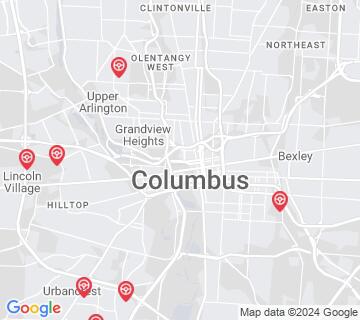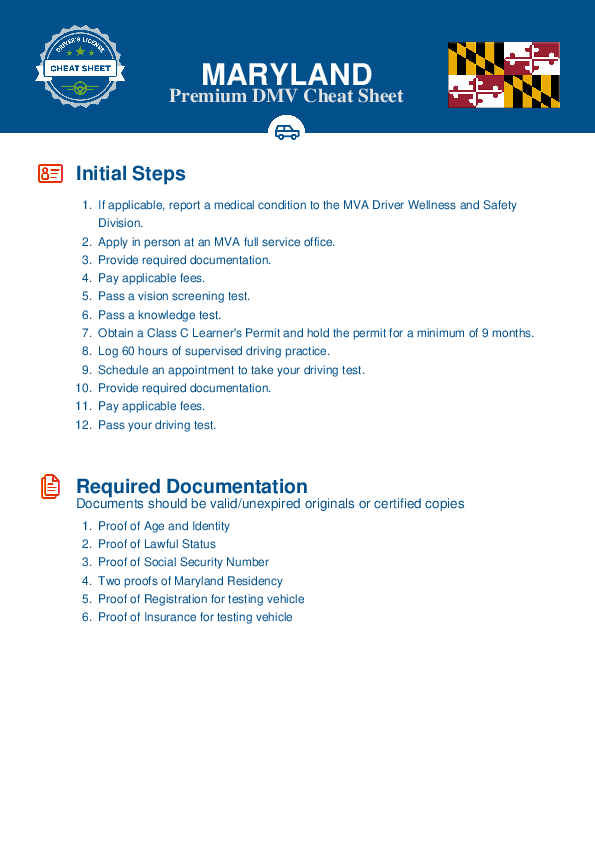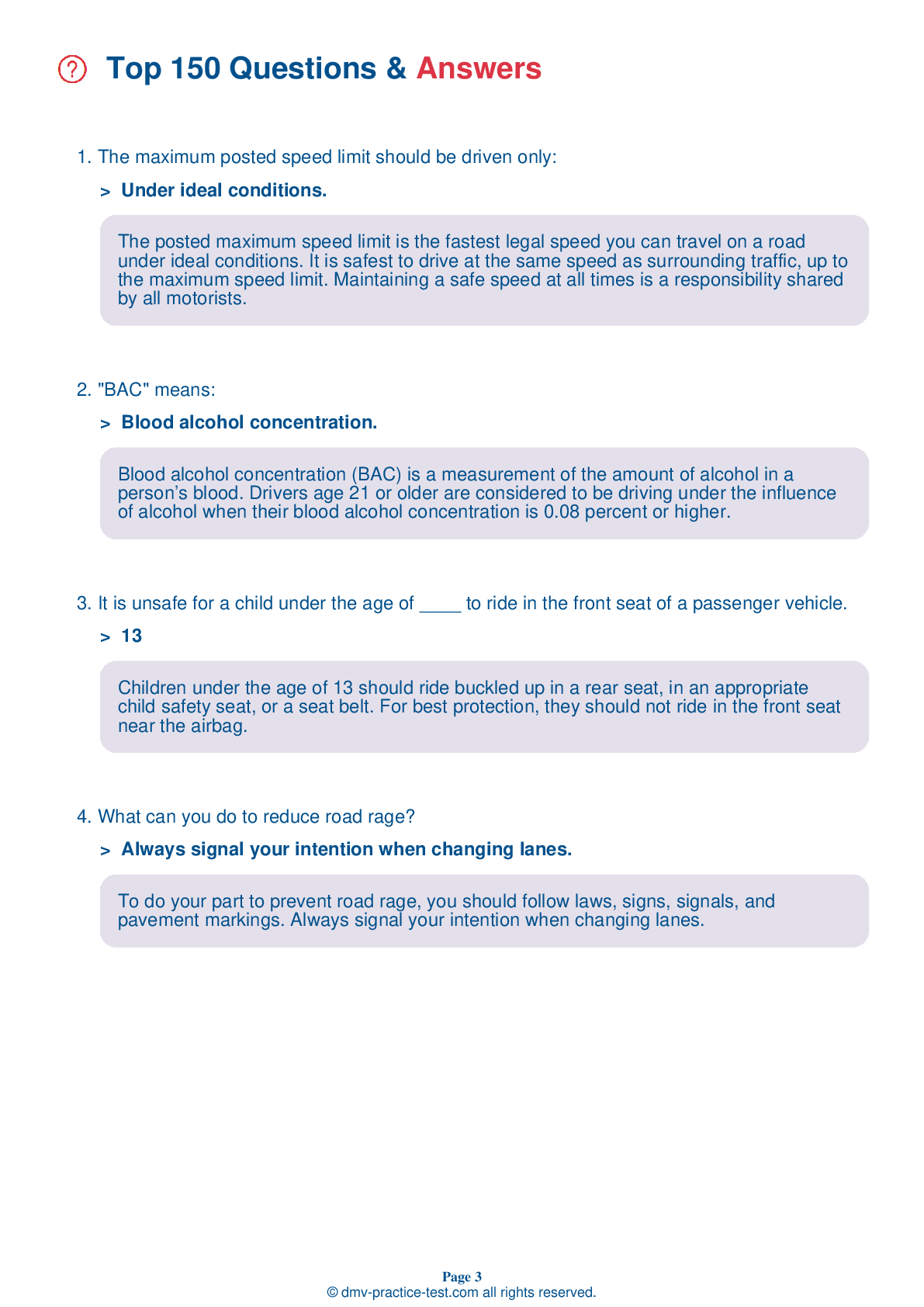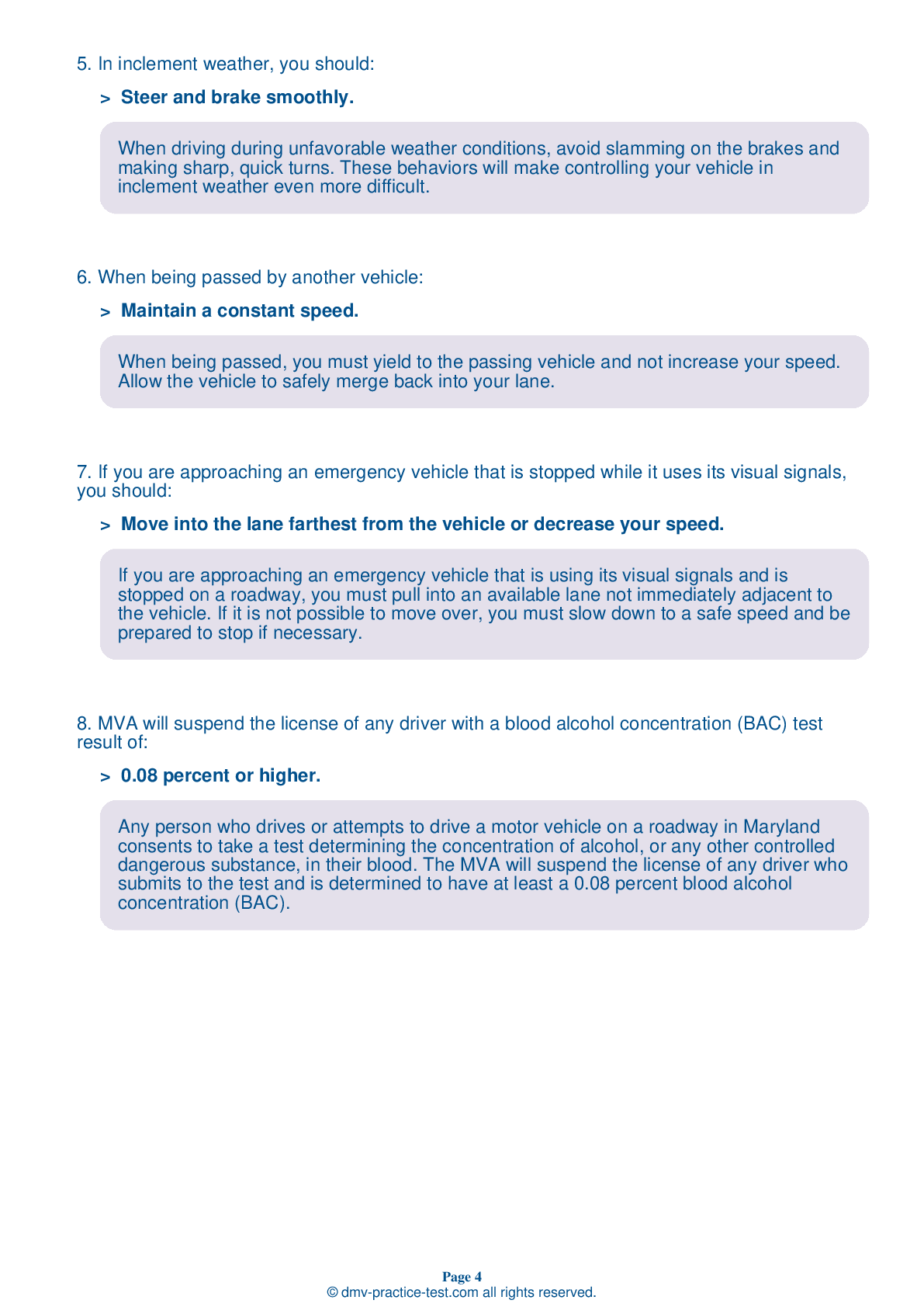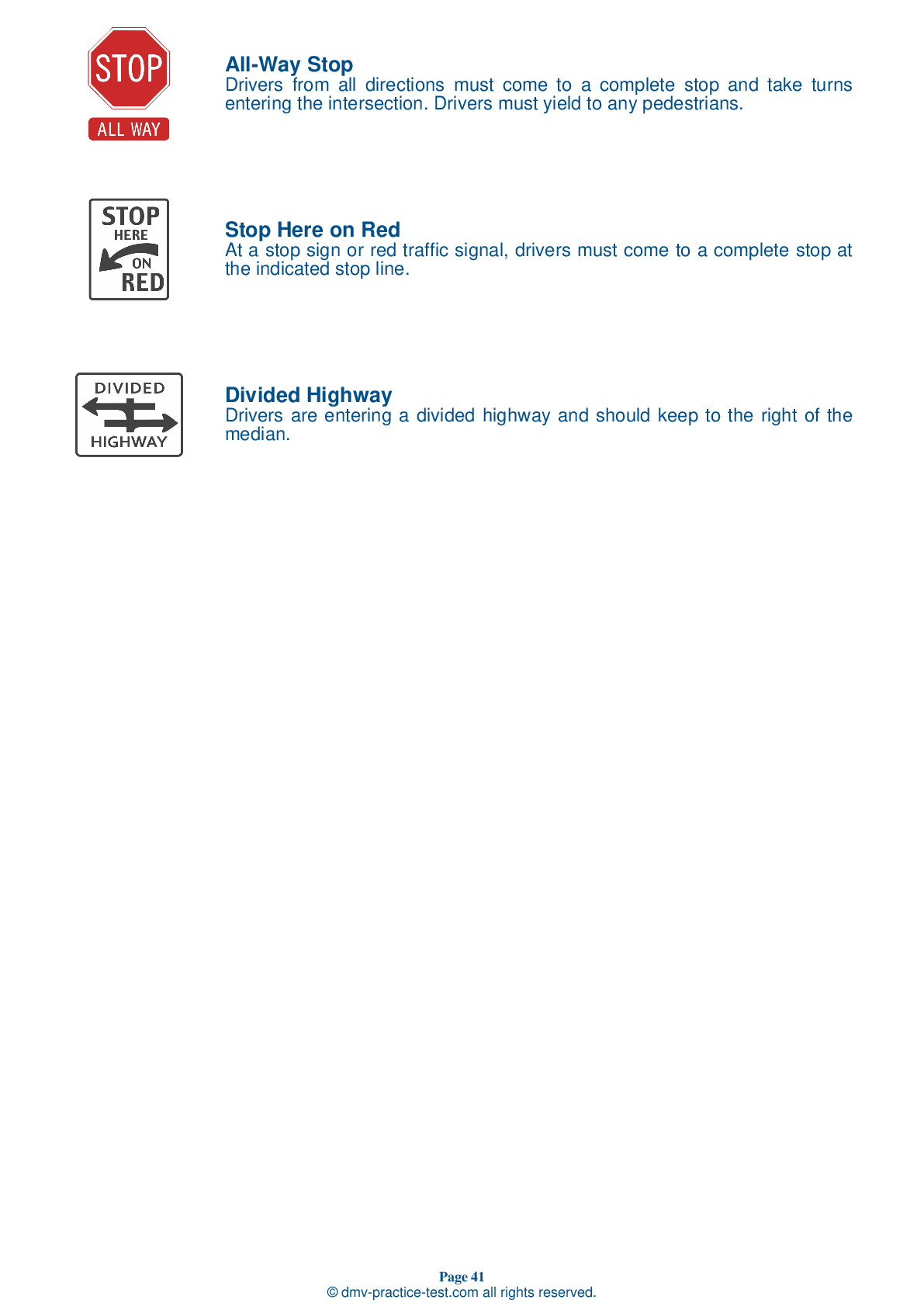FREE Maryland DMV Practice Test #2
Maryland DMV practise examinations have been updated for January 2024. It includes questions based on the Maryland Driver Handbook's most essential traffic signals and regulations for 2024. Use actual questions that are very similar (often identical!) to the DMV driving permit test and driver's licence exam to study for the DMV driving permit test and driver's licence exam.
On the practise exam, each question gets a tip and explanation to help you remember the concepts. The written component of the official Maryland DMV test will include questions about traffic rules, traffic signs, and driving statutes, as well as knowledge from the Driver Handbook.
To obtain a passing grade, you must correctly answer 22 of the 25 questions. Take our DMV practise exam to help you prepare for your Maryland instruction permit or driver's licence.
The DMV exam is available in several languages.
Using any kind of testing assistance will result in an automatic fail, and the DMV may take additional action against your driver's licence, so stay away from it.
1 . This sign means:
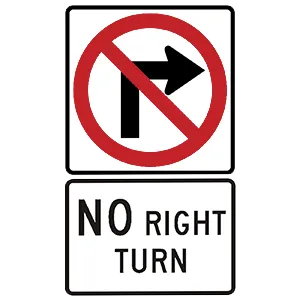
Where this sign is posted, it is prohibited to make a right turn. It would be unsafe and unlawful to make a right turn at an intersection with this sign.
2 . When driving under low-visibility conditions due to fog, you should:
When driving in fog, you should slow down and use your low beam lights. If the fog is so dense that you cannot see, pull off the road and wait for the fog to clear.
3 . Before changing lanes or attempting to pass another vehicle, you should:
Every time you want to change lanes or otherwise move your vehicle to the right or left, signal to alert other drivers to your intentions. Always check your mirrors and turn your head to check your blind spot before attempting any lateral move.
4 . What can you do to reduce road rage?
To do your part to prevent road rage, you should follow laws, signs, signals, and pavement markings. Always signal your intention when changing lanes.
5 . Which of these statements is true about roadwork zones?
Reduce your speed and be prepared to slow down or stop for highway equipment. Driving carefully through work zones improves safety for drivers, pedestrians, bicyclists, and road workers.
6 . If you want to enter the freeway but you don't see a gap in traffic, you should:
If you want to enter the freeway but do not see a space for your vehicle in traffic, slow down on the ramp to wait for a gap. Do not drive to the end of the ramp and wait for a gap or you will not have enough room to accelerate to the speed of traffic before entering the roadway.
7 . Do not use your high beam headlights when driving within ____ of an oncoming vehicle.
High beam headlights should be used at night to help a driver see their surroundings more clearly. Drivers should switch to their low beams when they are within 500 feet of another vehicle.
8 . Double broken yellow lines indicate:
Double broken yellow lines indicate the edge of a reversible lane. When driving next to double broken yellow lines, look for signs that direct the flow of traffic and make sure you are traveling in the correct direction.
Search the best driving school in your neighbourhood
2024 Maryland | Frequently Asked Questions
1. Be at least 15 years and 9 months old.
2. Pass the vision exam.
3. Complete the Maryland MVA Online Driver Test Tutorial.
4. Pass the knowledge test.
5. Provide proof of identity, age, and Maryland residency.
6. Have a parent or guardian co-sign your application.
7. Pay the required fee.
Remember, you must hold your learner's permit for nine months before you can take the driving test.
